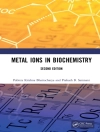The first authoritative overview of past and current strategies for successful drug development by analog generation, this unique resource spans all important drug classes and all major therapeutic fields, including histamine antagonists, ACE inhibitors, beta blockers, opioids, quinolone antibiotics, steroids and anticancer platinum compounds.
Of the 19 analog classes presented in detail, 9 are described by the scientists who discoverd them.
The book includes a table of the most successful drug analogs as based on the IMS ranking and compares them in terms of chemical structure, mode of action and patentability.
विषयसूची
Introduction
GENERAL ASPECTS OF ANALOGUE-BASED DRUG DISCOVERY
Analogues as a Means of Discovering New Drugs
Drug Likeness and Analogue-Based Drug Discovery
Privileged Structures and Analog-Based Drug Discovery
SELECTED EXAMPLES FROM THE ANALOGUE-BASED DRUG DISCOVERIES
Development of Anti-Ulcer H2-Receptor Histamine Antagonists
Esomeprazole in the Framework of Proton-Pump Inhibitor Development
The Development of a New Proton-Pump Inhibitor: The Case History of Pantoprazole
Optimizing the Clinical Pharmacologic Properties of the HMG-Co A Reductase Inhibitors
Optimizing Antihypertensive Therapy by Angiotensin Receptor Blockers
Optimizing Antihypertensive Therapy by Angiotensin-Converting Enzyme Inhibitors
Case Study of Lacidipine in the Research of New Calcium Antagonists
Selective Beta-Adrenergic Receptor-Blocking Agents
Case Study: ‘Esmolol Stat’ [1]
Development of Organic Nitrates for Coronary Heart Disease
Development of Opioid Receptor Ligands
Stigmines
Structural Analogues of Clozapine
Quinolone Antibiotics: The Development of Moxifloxacin
The Development of Bisphosphonates as Drugs
Cisplatin and its Analogs for Cancer Chemotherapy
The History of Drospirenone
Histamine H1 Blockers: From Relative Failures to Blockbusters Within Series of Analogues
Corticosteroids: From Natural Products to Useful Analogues
लेखक के बारे में
Janos Fischer is research laboratory head at Richter Ltd. (Budapest, Hungary). He received his education in Hungary with B.Sc. and P.h. D. degrees in organic chemistry at the Eotvos University of Budapest with Professor A. Kucsman. Between 1976-78 he was a Humboldt fellow at the University of Bonn with Professor W. Steglich. He has worked at Richter Ltd. since 1981 where he participated in the research and development of leading cardiovascular drugs in Hungary. His main interest now is analog-based drug discovery. He is author of some 100 patents and scientific publications. In 2004 he was elected member of the Chemistry and Human Health Division of IUPAC.
Robin Ganellin studied Chemistry at London University, receiving a Ph D in 1958 under Professor Michael Dewar, and was a Research Associate at MIT with Arthur Cope in 1960. He then joined Smith Kline & French Laboratories in the UK and was one of the co-inventors of the revolutionary drug cimetidine (also known as Tagamet). In 1986 he was made a Fellow of the Royal Society and appointed to the SK&F Chair of Medicinal Chemistry at University College London, where he is now Emeritus Professor of Medicinal Chemistry. Professor Ganellin is co-inventor on over 160 patents and has authored 250 scientific publications. He was President of the Medicinal Chemistry Section of IUPAC and is currently Chairman of the IUPAC Subcommittee on Medicinal Chemistry and Drug Development.












